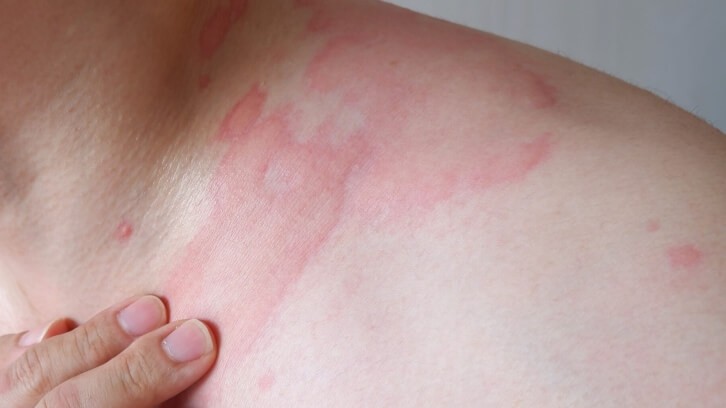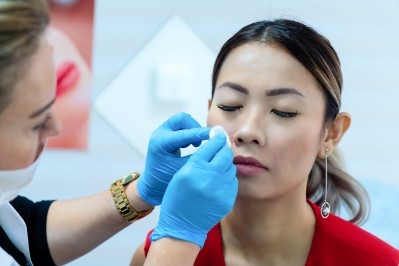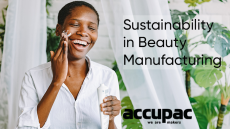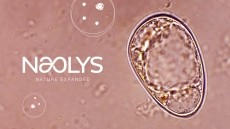Testing expert discusses cosmetic labeling to avoid allergic reactions

According to the Food Allergy Research and Education organization, “researchers estimate that 33 million Americans have food allergies, including 5.6 million children under age 18.” Of those 33 million, approximately 6.1 million people suffer from allergies to milk and milk products, 6.1 million have peanut allergies, 2.4 million have wheat allergies, and 1.9 million have allergies to soy products – all of which can be used as ingredients or ingredient-derivates in cosmetic or personal care product formulations.
To learn more about ways that cosmetic and personal care manufacturers can navigate product labeling to help consumers avoid potential allergic reactions, we spoke to Trevor Craig, Food Safety Expert and Corporate Director of Technical Training and Consulting at Microbac Laboratories, for his insights.
Craig has over 15 years of experience in the independent laboratory industry, primarily in food safety and microbiology, environmental testing, supplements, pharmaceuticals, and cosmetics. At Microbac Laboratories, Craig assists in testing for the food, environment, and life science industries, including pharmaceuticals, cosmetics, finished products, ingredients, and many other growing areas.
Types of potential allergens and MoCRA Severe Adverse Event Reporting
First, it’s essential to understand that “many cosmetics use common food ingredients,” Craig began, including “peanut, avocado, coconut, aloe, and other plant oils/butters” that are usually refined but commonly used. While “these items are refined in such a way just to include oils, which should remove many of the potential allergen proteins,” he explained, these ingredients can still pose “a risk in more rustic products.”
He added that other hero ingredients in cosmetic and personal care products can also include “rose, berries, herbs, fruits, and vegetables,” all of which carry risk as potential allergens.
“While the FDA requires allergen labeling in food, it does not have the same regulations in cosmetics,” Craig shared. Although the Modernization of Cosmetic Regulation Act (MoCRA) “gave FDA authority to create and enforce requirements for allergens,” typically, “in cosmetics, they look at preservatives, metals, fragrances, natural rubber, and dyes as the most significant risk and don’t necessarily include allergens in the same way food does,” he said.
Under MoCRA, “a responsible person is required to report serious adverse events associated with the use of cosmetic products in the United States to FDA within 15 business days. Further, MOCRA defines a serious adverse event as “an adverse event that results in death, a life-threatening experience, or inpatient hospitalization” and “requires, based on reasonable medical judgment, a medical or surgical intervention to prevent” any of the abovementioned outcomes.
Therefore, a severe allergic reaction like anaphylaxis is certainly an anticipated outcome as outlined in the Act, and it would require Severe Adverse Event Reporting to be filed with the FDA when such outcomes are reported to the manufacturer.
The importance of clear and understandable cosmetic and PBC product labeling
While “not everyone with a food allergen is sensitive to skin contact alone, some are,” said Craig, and “the most significant risk items would be those that have a higher risk of being ingested or touching sensitive areas, [which] means anything used for your lips or around your mouth or eyes could potentially be higher risk,” which includes a majority of cosmetic and personal care products.
Therefore, it is in the best interest of cosmetic and personal care manufacturers, suppliers, and brands to provide consumers with clearly labeled products to avoid potential allergic reactions by consumers – and these labels need to be easily understood, said Craig. “Some of these allergens may be clearly labeled, or products might be advertised as containing these natural ingredients, such as walnut shell powers, but they might also be referred to as the names of their refined forms,” he explained.
For example, he illustrated, “Arachis oil is peanut oil, and lauric acid is mainly directed from coconuts.” Further, “many cosmetics or skincare products have dairy in them, such as lactose and casein, which are made from dairy products,” he shared. As a result, cosmetic or personal care products formulated with ingredients like these should be explicitly labeled to avoid any confusion on the part of the consumer.
“Labeling is so important,” he added, because “right now, companies are not required to be specific on their labels when putting ‘flavors’ or ‘fragrances’ in their products.” Additionally, he clarified, “terms like ‘fragrance-free,’ ‘hypoallergenic,’ or ‘for sensitive skin’ are generally unregulated.”
As it’s “up to the manufacturer to use those, [and] while they may be true,” he concluded, those terms “may also just be a marketing advantage to use and have very little meaning,” further emphasizing the need for clear and understandable labeling to mitigate any potential risk to consumers regarding possible allergens in ingredient formulations.
















